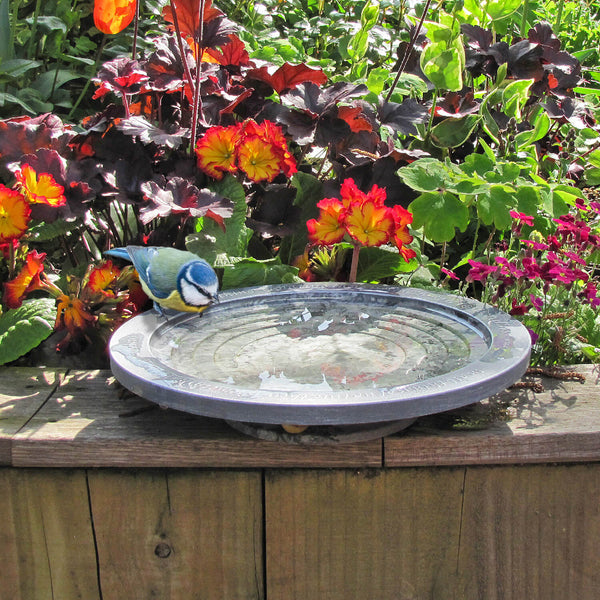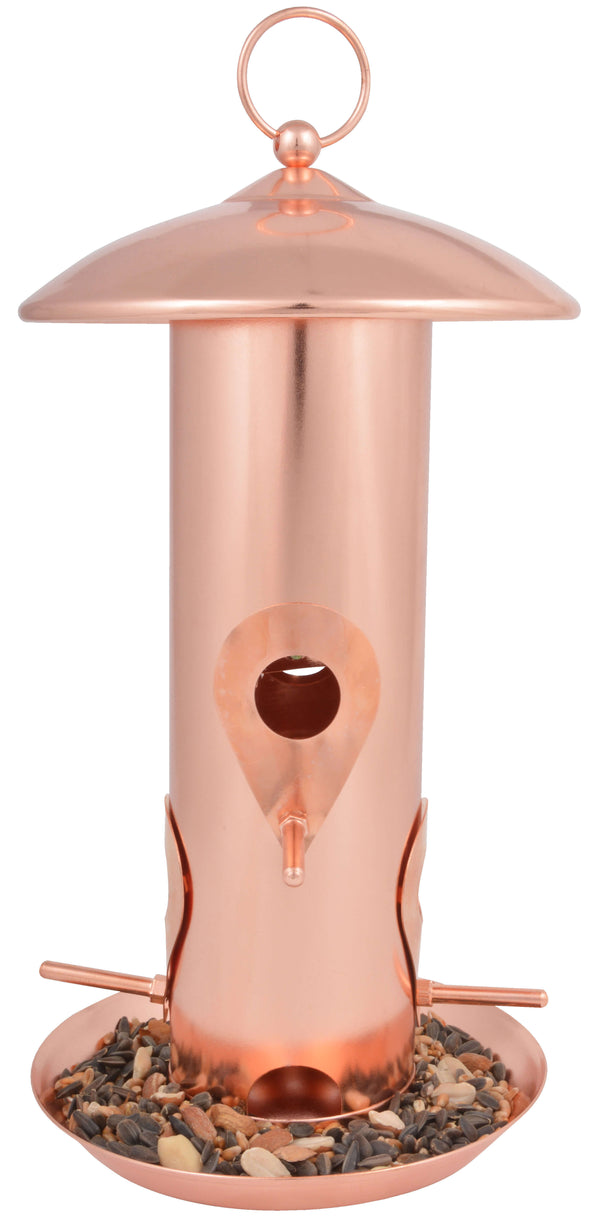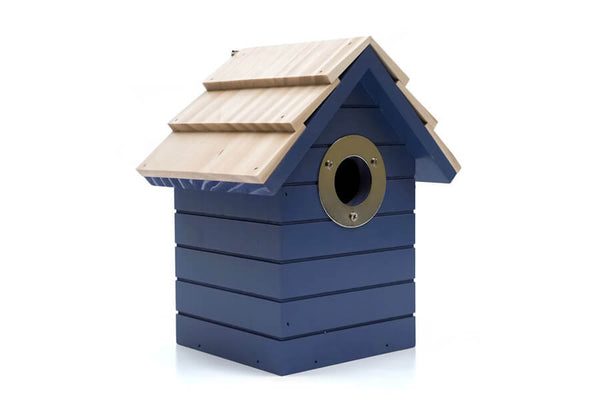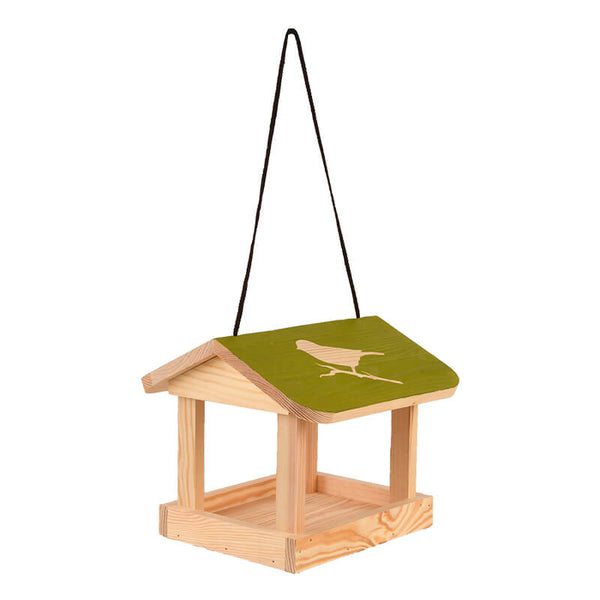Garden Bird Migration: Welcoming Birds That Migrate to the UK in the summer
It’s a wonder small birds like the Goldcrest can travel long distances across the world during their migration seasons, but every year, when the time is right, nearly 17 million birds will pass through the UK on their migration journey. With some staying for the summer, and some migrating birds just stopping off on their travels.
Birds that arrive during the spring season will spend their time in the UK breeding and raising their young - heading back to their home countries once the weather begins to get colder.
There are some really amazing birds to look out for during the spring and summer seasons and we’re going to talk you through all of our favourites! (And how you can welcome them into your outside space!)
What Is Migration?

Migration is defined as the seasonal movement of animals from one region to another. This movement can be as far as 16,000 miles for birds, and they can travel at speeds of up to 30mph. In the UK, we get summer visitors and winter visitors, when they arrive in the summer they are here to breed and raise their young birds.
Birds migrate for many different reasons - but the main is weather conditions and food availability. Summer migrants use the UK as their breeding grounds - so there are some really interesting behaviours to spot.
Because some of the journey’s birds are making are so long, many will have stop over points, these are places the birds will go to rest, eat and drink. For many birds, our gardens are convenient points, which is why it’s important to have shelter and food and water out for birds. (Bonus points if you make sure you have high energy foods such as fat balls in your garden!
Why Do Birds Migrate?
Wherever they are travelling, Birds migrate for a number of reasons but there are some key reasons why birds undertake these long distances.
Many bird species migrate to take advantage of seasonal changes in food availability. In the spring and summer months, birds migrate to areas where insects are abundant, providing a plentiful food source for breeding and raising their young. In the autumn and winter months, they may migrate to warmer regions or areas where seeds, fruits, or other food sources are more readily available.
Birds migrate to specific regions to breed and raise their young, as these areas offer suitable nesting sites, abundant food, and favourable environmental conditions for reproduction. For example, some migratory birds travel long distances to reach breeding grounds in the Arctic or other northern regions where temperatures are milder and daylight hours are longer during the summer months.
Migration allows birds to avoid harsh environmental conditions, such as extreme cold, drought, or limited food resources, which can make survival difficult. By moving to more hospitable habitats, birds can minimise the risk of exposure to adverse weather conditions and increase their chances of survival during challenging times of the year.
Summer Migratory Birds UK
Around 4,000 species of birds migrate each year, and in the summer, some end up in the UK.
Swallow

Swallows are small, sleek birds that have long pointed wings and forked tails. Known for their acrobatic flight and displays, this species migrate from their wintering grounds in Southern Africa to the UK (similar to other birds), and other parts of Europe, in the spring to breed.
You can spot Swallows in a range of habitats, including farmland, grasslands and wetlands. Just look for birds darting low over fields and water bodies.
Common Swift
A fast flying bird, Swifts spend a lot of their time in the air, feeding on insects and are often seen in large flocks.
They spend the winter in Sub Saharan Africa and then this summer visitor heads to the UK and Europe to breed.
Common Cuckoo

These medium sized birds have a slender body, long tail and pointed wings. Known for their distinctive call, these birds migrate to the UK in the spring to breed.
Adult Cuckoos exhibit a behaviour known as ‘brood parasites’ because they lay their eggs in the nest of other bird species and let the other bird mum raise its chicks.
Willow Warbler

Willow warblers are small, olive-green birds with yellowish underparts and a pale supercilium (eyebrow stripe). During the spring they make the journey to the UK to breed.
During this time, you will hear their sweet song of these garden warblers in woodlands and gardens!
Turtle Doves
Turtle Doves are declining migratory birds that breed in the UK during the summer months. They prefer open woodland, hedgerows, and scrubby habitats, especially with a mixture of trees, bushes, and open ground.
You can try to spot a Turtle Dove in agricultural landscapes, parks, gardens, and areas with flowering plants and water sources. These birds are mainly found in Southern England, Eastern England and parts of Wales.
Spotted Flycatchers
Spotted Flycatchers are small, insect-eating birds that breed in the UK during the summer months. They inhabit a variety of wooded habitats, including woodlands, parks, gardens, and urban green spaces. They are found across England, but are abundant in Northern England and the west.
Spotted Flycatchers are usually found perched on branches or wires, darting out to catch flying insects before returning to their perch.
Reed Warblers
Reed Warblers are migratory birds that breed in the UK during the summer months, particularly in wetland habitats. They are typically found in reed beds, marshes, wet meadows, and other areas with dense vegetation and water.
Listen for the repetitive, melodious song of Reed Warblers as they sing from within dense vegetation, often near the water's edge.
Hobby
Spending the winder south of the Sahara desert, the Hobby migrates to tropical Africa in the winter, spending the spring and summer in the UK.
You'll find this falcon catching insects in the air and soaring across the sea.
Creating a Welcoming Environment For Migrating Birds

When birds are travelling such a long way it's important that our gardens welcome those on their spring migration journeys.
Invest in a bird feeder and bird food to put out for your garden birds - this will give them a reliable food source and keep them healthy during this high energy time. During the breeding season, it's important for birds to have access to high energy food like high energy seed mixes and fat balls - so we would recommend including these two in your garden!
We would not survive without water, and neither would birds, which is why a small dish or bird bath is a great way to encourage our summer visitors to enjoy our gardens.










